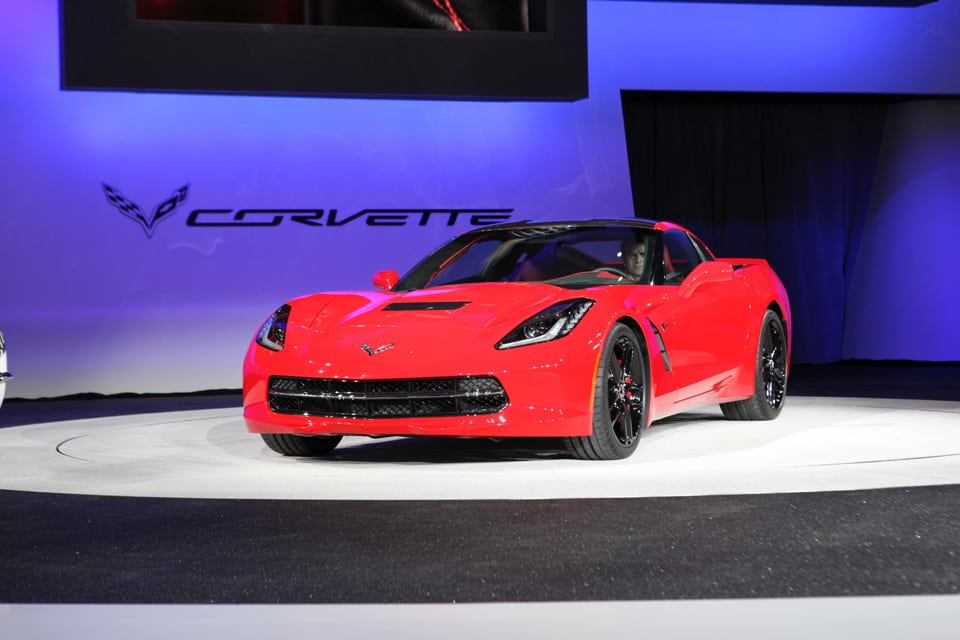GM is offering a version of its new GM-developed Hydra-Matic 8L90 paddle-shift 8-speed automatic transmission in the 2015 Corvette Stingray and Z06. We talked briefly about the 8L90 in an article about GM going to 8-speed automatic transmissions. While that transmission is meant for heavier applications, this new transmission is meant for lighter, sportier applications.
GM’s objectives in developing the new 8-speed were improved fuel economy, performance, and NVH (noise, vibration, harshness)—while staying in the footprint of the 6L80. The eight-speed powerflow yields a 7.0 overall ratio spread, enabling improved launch capability because of a deeper first gear ratio and better fuel economy due to lower top gear N/V capability, relative to the 6L80.
The eight speed ratios are generated using four simple planetary gearsets; two brake clutches; and three rotating clutches. The resultant on-axis transmission architecture utilizes a squashed torque converter; an off-axis pump; and four close-coupled gearsets. The three rotating clutches have been located forward of the gearsets to minimize the length of oil feeds which provides for enhanced shift response and simplicity of turbine shaft manufacturing.
GM says that their selected powerflow results in four major benefits:
1. It can be effectively executed using all simple gearsets (unlike the incumbent six speed powerflow) which provides for improved gearmesh efficiency, low pinion count, and increased flexibility in pinion count.
2. All three rotating clutches attach to a single node of the transmission which provides for simple and effective rotating clutch oil feed options.
3. It exhibits relatively low carrier speed ratios which keep pinion bearing g-loads to a minimum.
4. It offers a high reverse-to- first gear ratio unlike some of the other powerflows considered.
The five clutches are used three at a time, leaving only two open clutches in each gear state. All sequential shifts are performed in single transition while most multi-step shifts can also be executed in the same manner.
Despite the larger number of gears and resulting accouterments in this transmission, however, GM says that weight is reduced from the previous six-speed thanks to more extensive use of aluminum in this transmission that’s been designed to use it.
In the 2015 Corvette Stingray, the new 8-speed enables a class-leading 29-mpg (8.1 l/100 km) EPA highway estimate – a 3.5 percent increase in fuel economy over the previous six-speed automatic – and a quicker 0-60 time of 3.7 seconds, all while delivering wide-open-throttle upshifts quicker than those of the dual-clutch transmission offered in the Porsche 911.
The top gear ratio is 0.65 vs. the six-speed’s 0.67. Combined with a new, numerically lower 2.41 rear axle ratio in the Stingray vs. the 2.56 gear used with previous six-speed automatic models, engine rpm is reduced by 8 percent (123 rpm) on the highway at 70 mph. The lower engine speed reduces fuel consumption, while a new torque converter design enhances refinement, particularly during low-speed gear changes.
Stingray models equipped with the Z51 Performance Package feature a more aggressive 2.73 axle ratio, while the Corvette Z06 features the 2.41 axle ratio.
You can read more technical details about the new 8-speed automatic transmission in a paper from CTI Symposium 2014: James M. Hart, Tejinder Singh, William Goodrich, Larry Diemer, General Motors Rear Wheel Drive Eight Speed Automatic Transmission. (PDF)









